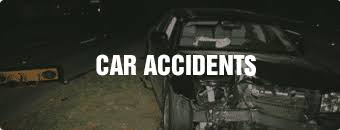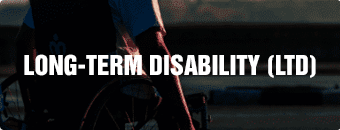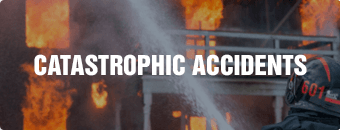- Our Firm
- Personal Injury
-
-
-
Personal Injury Lawyers
-
-
-
-
-
-
Injured in an accident? At Diamond & Diamond, our team of lawyers rely on their reputation in the field and extensive experience in personal injury to provide clients with a dedicated support system over the duration of their case.
-
-
-
-
-
HAVE YOU RECENTLY BEEN INJURED IN AN ACCIDENT?
-
-
-
- Corporate
- Class Action

Honking 101: The Proper Use of Car Horns
Drivers primarily rely on visual queues when they’re on the road. While this is common, there are times when more is required. If you’re driving on a foggy highway or taking a blind turn, you need sound to alert other drivers. This is where horns become invaluable.
Horns may be essential, but they’re also misused. Some drivers honk their horns to warn other motorists and communicate effectively. Others use horns to express anger and frustration or fuel road rage. You should only use your car horn when it’s necessary for safety purposes.
If you or a loved one suffers injuries because of another motorist’s negligent and aggressive car honking, talk to Diamond and Diamond Lawyers. They can help you fight for your rights and get the compensation you deserve.
|
Key Takeaways
|
Getting To Know Car Horns
Car horns are plain horns that utilize compressed air to create noise. They’re often used in emergency vehicles, like fire trucks, police cars, and ambulances. The mechanisms in these vehicles are similar to those in ships and trains.
Vehicle air horns typically contain a chamber filled with compressed air connected to a valve. This valve enables air to flow into the horn’s resonance chamber.
Air horns alert people that vehicles are approaching. This simple device can save you and the people around you.
Different Types of Vehicle Horns
It’s best to be acquainted with the types of horns to understand their importance in different driving scenarios.
Bulb horns
Bulb horns are made from rubber, taking on the appearance of a bulb with a conical opening. These horns are connected to a metal horn and activated by squeezing the bulb. When the bulb is squeezed, airwaves are expelled through the horn opening, which produces the sound.
Bulb horns function according to the principle of sound reflection. While they were commonly found on bicycles, technological advancements have led to their integration into buses and trucks.
Air pressure horns
This type of horn operates by utilizing air pressure from compressed air buildup inside the horn. This buildup passes through a reed, generating a sound.
These horns are commonly integrated into vehicles equipped with air tanks, allowing the air-pressure braking system to function. Air pressure horns are highly effective when an air surplus for pressurization is available.
Electric car horns
Electric car horns are typical in modern vehicles, especially in private cars.
There are two primary types of electric car horns: wind tones and electric horns. Both use electromagnetism to produce sound.
The difference between the two types lies in their sound emission mechanisms. In the wind tone type, the diaphragm produces sound and then passes through a windpipe. This type of horn is commonly found in modern cars, resembling the sound of an activated bugle.
Reasons You Should Use Car Horns
Do you need help determining whether it’s okay to honk? Here are some common scenarios where hitting your car horn is helpful and necessary.
Alert other drivers and pedestrians to issues
Using your car horn is primarily a defensive driving technique and should be used in the following critical scenarios:
- If your car’s brakes fail
- You experience a blown tire on the highway
- You encounter a large object obstructing the road ahead
Honking can effectively warn others of potentially hazardous situations. Using the horn can help prevent accidents and make sure that everyone on the road is safe.
Communicate with other motorists
Imagine that the vehicle in front of you is drifting into your lane, leading to a potential sideswipe. In such a situation, a brief beep of the horn can effectively alert the other driver that they are coming too close to you and that they should drive more carefully.
Signal an imminent car crash
Imagine that you’re in the blind spot of an 18-wheeler, and the driver starts merging into your lane.
With no available space to maneuver, you need to use your horn so that you can notify the driver that they’re merging into your lane. This will help you to avoid a potential accident.
Calling someone’s attention
Imagine another scenario: You’re at an intersection, and the traffic light turns green. However, the vehicle in front of you doesn’t move. After waiting for several seconds, it’s not a bad idea to give the driver a polite ‘beep.’ This serves as a gentle reminder for them to start moving.
Informing someone of a looming danger
If you notice that a pedestrian is not paying attention to the road and is about to walk in front of your vehicle or another vehicle, use your horn to alert them.
However, it’s important not to honk at pedestrians or cyclists who are following traffic rules. In such situations, patience is crucial, and you should avoid unnecessary honking.
Situations When Car Honking Isn’t Appropriate
The noise the horn makes may startle other motorists, causing them to panic or cause road rage incidents. Therefore, it’s best not to honk if you have a choice. For example, if you can change lanes or slow down without honking to avoid a crash, do so. Honking may help, but you must only do it when it’s appropriate.
If you’re in a foul mood, it’s best not to honk. Rather, keep calm and avoid honking even if someone cuts you off. 
Aggressive Car Honking: A Negligent Act?
Honking is bad for one’s health because noise pollution puts enormous stress on your cardiac system. Moreover, aggressive honking is distracting to motorists, and it can quickly escalate into road rage, which can cause accidents.
Horns work to keep you safe since they warn other drivers of your presence on the road. Sadly, motorists often honk to retaliate against or punish another driver. Bankrate reports that honking and other aggressive road behaviour account for over 50 percent of all fatal car crashes.
Here are a few issues related to unnecessary and unreasonable honking:
- Honking results in noise pollution, leading to increased heart rates and affecting people in the surrounding area
- The sudden honking can startle other road users, which can lead to abrupt acceleration or sudden veering off the road
- It puts everyone on the road at risk because it distracts drivers from focusing on the road
- Honking can escalate road rage, potentially leading to dangerous retaliations from other drivers
Honking is a very common form of road rage, and it coincides with other aggressive behaviour. These additional forms of road rage commonly accompany unnecessary, impatient, retaliatory, and excessive honking:
- Speeding: Driving too fast and exceeding the speed limit
- Unsafe lane changes: Swerving between lanes without using turn signals
- Illegal passing: Passing on the shoulder, in the bike lane, or on an exit ramp
- Tailgating: Following too closely the vehicle up front
- Road rage outbursts: Shouting, making rude gestures, or yelling at other drivers
- Offensive gestures: Using obscene or rude gestures toward other road users
- Dangerous throwing: Throwing objects at other road users
- Forcing off the road: Intentionally pushing motorcyclists or bicyclists off the road
- Braking to intimidate: Suddenly braking to scare or punish another driver
- Blinding with bright lights: Using overly bright headlights to inconvenience others
- Ramming or sideswiping: Intentionally colliding with drivers, cyclists, or pedestrians
- Blocking passing cars: Preventing other vehicles from overtaking
- Deliberate slowdown: Moving in front of another vehicle and slowing down to provoke anger or frustration
Proper Way of Honking Your Horn
Honking is a defensive driving technique, and its main objective is to ensure safety on the road. Use the horn sparingly and opt for a quick beep whenever possible. Be firm when honking, but always communicate politely with other drivers.
You should only use the horn when necessary, such as to give an audible warning. You should avoid using it for any other purpose, like making unreasonably loud or harsh sounds or using the horn while the vehicle is not moving.
It’s also wise and logical that every motor vehicle should have a functioning horn. It should be capable of emitting a sound loud enough to warn other users of your presence and to help avoid an accident. Furthermore, horns shouldn’t be used to create unnecessary noise.

Is it legal to honk your car horn in Canada?
In Canada, honking is generally prohibited except when you’re using it to warn others of imminent danger. Canada’s Criminal Code considers it an offence for anyone to create unnecessary noise or disturbance in or near a public place.
Provinces and territories may also have their own legislation in place that dictates how drivers may use their horns.
If honking is used as an act of aggression or to create loud and excessive noise, it can be both a provincial and a criminal offence. This aligns with the country’s “Noise Pollution” regulations, which explicitly declare that all noise pollution is against the law and is subject to various prohibitions and restrictions.
Nevertheless, drivers need to know about exceptions to the general rule. For instance, a driver may use the horn to warn someone from accidentally entering a hazardous area.
However, even in such cases, they must avoid excessively using the horn, as this could potentially violate local, provincial, and federal noise laws. It’s crucial to balance using the horn for legitimate safety purposes and not causing unnecessary noise disturbance to others.
Different Canadian Provinces and Their Respective Car Honking Laws
These are notable Canadian provincial laws on using car horns.
Alberta: Edmonton’s Noise Bylaw
A proposed bylaw prohibits vehicles or any of their components, including aftermarket additions, from making deafening and unnecessary noise. Any idle motorcycle emitting noise exceeding 92 decibels, that’s 50 centimetres from the exhaust pipe, is prohibited. The same rule applies to noise above 96 decibels while the vehicle is in motion.
British Columbia: Motor Vehicle Act
Section 7.02 of the Motor Vehicle Act Regulations says that motor vehicles operating on highways must have a functioning horn capable of emitting a sound audible from a distance of at least 60 metres. However, the horn, or any other warning device, must not produce a loud or harsh sound.
Manitoba: The Highway Traffic Act
According to section 44(1) of The Highway Traffic Act, all motor vehicles driven on the road must have a functional horn that can emit an audible sound from a minimum distance of 60 metres. Additionally, vehicles shouldn’t have a siren-like sound, which is primarily used in vehicles for law enforcement.
Ontario: Highway Traffic Act
Section 75(5) of the Highway Traffic Act provides that every motor vehicle must have a functioning horn, gong, or bell capable of emitting a sound sufficient in quantity and volume to warn other highway users and pedestrians. This signalling device should be used solely for warning purposes and not to create any unnecessary noise.
Right to Quiet vs. Right to Protest: Which is more important?
Early last year, Justice Hugh McLean of the Ontario Superior Court of Justice issued a 10-day injunction prohibiting truck drivers from honking their horns that disrupted life in downtown Ottawa.
Demonstrators, who were primarily truck drivers, arrived in the city on January 28 and had been using their horns to protest the government’s vaccination policy. Justice McLean stated that the ongoing loud protest has infringed on citizens’ “right to quiet.”
While acknowledging people’s right to protest in different ways, Justice McLean concurred with lawyer Paul Champ’s argument that the relentless noise could potentially lead to irreparable and permanent hearing damage.
The injunction was enforced without delay. Additionally, McLean also turned down the demonstrators’ plea to allow them to blow their horns for five minutes at 5 PM daily.
Class suit
Zexi Li, a 21-year-old resident living in downtown Ottawa, was the plaintiff in the case. According to the evidence presented by Champ, Li recorded the noise in her apartment exceeding 80 decibels. Champ described this as akin to “operating a lawn mower in her living room, 24/7.”
Moreover, other residents have measured the noise reaching over 120 decibels at street level when “train horns” were used.
Though the $9.8 million class action lawsuit only mentioned Li by name, it was open to approximately 6,000 residents who lived within or close to the designated “red zone.”
Extension of the injunction order
After the 10-day injunction expired, Justice Hugh McLean granted an extension of the same for another 60 days. It ordered the “Freedom Convoy” truckers to refrain from blowing air horns.
Justice McLean emphasized that while protesters have the right to express their views, this doesn’t supersede the public’s right to peace and safety. Therefore, he extended the injunction so that there would be order and tranquility in the broader community.
Though this might not always be true, people’s right to quiet took precedence over the right to protest in this case.
Similar Case and Principles in US Case Law
The law in Canada is clear. You should only honk your car horn when you want to draw someone’s attention to a dangerous situation. However, since Canada has limited studies on the constitutionality of car-honking laws, it’s best to use US case law to explore the topic.
Like in Canada, the improper use of car horns is unsafe and against the law in some US states. For example, Washington and Michigan prohibit using horns for anything other than safety. On the other hand, California explicitly mentions the situations wherein one should use a car horn.
Apart from these state laws, counties with noise pollution laws prohibit loud honking in rural and residential areas at specific hours of the day. With these strict regulations in place, people are still debating whether honking is a constitutional right. The answer to this question lies in the recent California case involving honking during a political protest.
California case on car honking
In Porter v Martinez, Susan Porter honked a total of 14 times at a rally to protest Representative Darrell Issa in 2017. The San Diego County sheriff’s deputy, Kelly Martinez, flagged Porter down and cited her for violating section 27001 of the California Vehicle Code, which prohibits using a horn except as a burglar alarm system.
In a 2-1 vote, the Court of Appeals held that the sheriff’s deputy had the authority to issue the citation to Porter. The dissenting judge, however, said that the citation provision was unconstitutional.
Alleged infringement of rights
The judicial history of the case is that after Martinez issued the citation, Porter filed a civil case, alleging that section 27001 of the California Vehicle Code would prevent her from honking to show support at other public rallies.
She further argued that the provision infringed on her rights guaranteed by the First and Fourteenth Amendments, as it curtailed her ability to express her political opinion.
California, on the other hand, argued that the statute was content-neutral and meant to serve essential public interests, including reducing noise pollution and promoting general safety. The district court sided with California.
Dismissal of the case
The Court of Appeals for the Ninth Circuit addressed the First Amendment concerns raised by Porter’s case on April 7, 2023.
The court scrutinized the law and ultimately determined that it was narrowly crafted to advance the public interest and dismissed Porter’s argument.
Judge Michelle T. Friedland stated, “Section 27001 does not discriminate between various types of honking. On the other hand, the law treats all instances of horn usage equally when no safety hazard is present.”
The majority referenced the testimony of the California Highway Patrol officer, who said that indiscriminate honking could lead to confusion among drivers and pedestrians.
Dissenting opinion
Judge Marsha S. Berzon held a different view, asserting that “honking to answer or support a political protest” should be protected speech. Furthermore, Judge Berzon pointed out that other individuals who honked their horns during the protest received positive reactions from the crowd.
Ultimately, Judge Berzon concluded that section 27001 conflicted with the First Amendment. According to her, California failed to demonstrate that it served a crucial government interest when put in the context of political protest honking. Furthermore, she said that the statute was not explicitly enacted to exclude such honking.
Next course of action
According to the Washington Post, Porter and her attorneys had until April 21, 2023, to request a hearing before the entire Ninth Circuit Court. If the request is made, it’s anticipated that portions of Judge Berzon’s dissent will be included.
Notably, Judge Berzon focused on the issue of overbreadth and highlighted that not all honking qualifies as First Amendment-protected communication, as much of it is merely noise.
To address the problem of statutory overbreadth concerning First Amendment-protected honking, Judge Berzon suggested that an exception be made to exclude such honking from the statute’s application.
It’s best to seek the advice of a lawyer on matters related to exercising your rights.
Modern cars have better soundproofing. Hence, its horns are tuned to A-sharp and F-sharp, which are more penetrating. Despite their high-tech designs, some horns are still reminiscent of the past era’s vibrating diaphragm. These horns work well by putting out 110 decibels of sound.

Did you know?
Seek Legal Advice When Injured by Aggressive Honking
Though drivers have the right to honk their car horns, they should do so within the purview of the law. Otherwise, they can be penalized. If you or a loved one suffered physical, emotional, or psychological injuries from aggressive and unlawful honking, contact Diamond and Diamond Lawyers.
Our lawyers have extensive, hands-on experience handling cases involving aggressive honking. We can support you by providing sound legal advice and representing you during settlement negotiations, as well as at trial. You can check out our site for resources on aggressive car honking and other vehicle-related issues. Call us today for a free case consultation.
You don’t have to suffer in silence. Fighting for your rights starts with awareness. Diamond and Diamond Lawyers can help in both cases. Give us a call now!
Need a Lawyer?
We are here 24/7 to address your case. You can speak with a lawyer to request a consultation.
1-800-567-HURTGet started with a free consultation
OUR TEAM
- Ishmeet Sandhu
- Nolan Bachmann
- Marissa Faulkner
- Annamarie Demaj
- Jeffrey Hum
- Tofunmi Adeyeye
- Alessia De Gasperis
- Amandeep Chawla
- Jeremy Tsoi
- Kimiya Razin
- Bilal Hashimy
- Shir Zisckind
- Gray Sinden
- Shelly Bard
- Christian Brown
- Daly Canie
- Tanveer Sohal
- Prianka Virdi
- Noah Brownstone
- Justin Kaminker
- Harinder S. Bhatti
- Craig Yargeau
- Kiran Birk
- Amit Singh
- Andrei Teju
- Maria Zahid
- Matthew Douglas
- Jacob Elyk
- Harry Gill
- Kristina Olivo
- Egi Bano
- Cam Woolley
- Charles Thompson
- Alexandra McCallum
- John Sime
- Allan Cocunato
- Patrick Poupore
- Erika Henderson
- Marina Korshunova
- Brandon Handelman
- Regeena Alapat
- Ryna Kim
- Natalia Poliakova
- Isaac Zisckind
- Manpreet Bhogal
- Mathura Santhirasegaram
- Nikolai Singh
- Sandra Zisckind
- Jeremy Diamond
- Michael Blois
- Darryl Singer
- Nadia Condotta
- Tinashe Madzingo
- Megan Armstrong
- Veronica D’Angelo
- Corey J. Sax
- Scott Tottle
- Steven Wilder
- TJ Gogna
- Jillian Carrington
- Joshua Himel
- Simon Diamond
- Cory Rubin
- Simon Mariani
- Brandon Greenwood
- Basil Bansal
- Nastassia Ivanova
- Tania Fleming
- George Laloshi
- Patrycja Majchrowicz
- Diana Iakossavas
- Dior Africa
- Alex Ragozzino
- Liana Saccucci
- Richard J. Chang
FAQs on Honking 101: The Proper Use of Car Horns
Is honking considered catcalling?
In some instances, catcalling may include honking car horns at women passing by. Other forms of catcalling include displaying vulgar gestures, engaging in self-exposure, and inappropriate physical grabbing. It’s best to walk away from these incidents and not give them any attention.
What's the penalty when you honk your horn for no particular reason?
Refrain from honking your horn to express impatience, not only because it’s impolite, but also for legal reasons. If, for example, you honk your horn without a valid reason in Quebec, a peace officer may issue a traffic ticket and ask you to pay a fine of up to $281.
Can you drive without a car horn?
No, federal and provincial laws in Canada require motor vehicles to have a bell, gong, or horn.
NEED A LAWYER? CONTACT OUR TEAM TODAY
Chat Now
OR CALL NOW FOR A FREE CONSULTATION
 1-888-INFO-LAW
1-888-INFO-LAW
Head Offices
Main Offices
Barrie
Main Office
168 Bayfield Street
Calgary
Main Office
1331 Macleod Trail SE, Suite 645
Edmonton
Head Office
4246 97 Street NW, Unit 103
Halifax
Consultation Office
1701 Hollis St
London
Main Office
256 Pall Mall St, Suite 102
Oshawa
Consultation Office
50 Richmond Street E, Unit # 108 B
Ottawa
Main Office
955 Green Valley Crescent, Unit 315
Sudbury
Main Office
31 Larch Street, Unit 300
Timmins
Main Office
120 Cedar Street South, Unit 002A
Toronto
Head Office
255 Consumers Road, 5th Floor
Vancouver
Head Office
1727 West Broadway, Suite 400
Windsor
Main Office
13158 Tecumseh Rd. E. Unit 3B
Additional Areas Served
Ontario
- Ajax
- Alberta
- Aurora
- Barrie
- Belleville
- Bowmanville
- Brampton
- Brantford
- Brockville
- Bracebridge
- Bradford
- Burlington
- Burnaby
- Calgary
- Chatham
- Cobourg
- Collingwood
- Cornwall
- Durham
- Edmonton
- Elliot Lake
- Etobicoke
- Georgetown
- Guelph
- Hamilton
- Huntsville
- Kanata
- Kelowna
- Kingston
- Kitchener
- Leamington
- London
- Markham
- Milton
- Mississauga
- Muskoka
- Niagara Falls
- Newcastle
- Newmarket
- North Bay
- North York
- Oakville
- Orangeville
- Orillia
- Oshawa
- Ottawa
- Owen Sound
- Parry Sound
- Perth
- Peterborough
- Pickering
- Prince Edward County
- Richmond
- Richmond Hill
- Sault Ste Marie
- Sarnia
- Scarborough
- St. Catharines
- St. Thomas
- Stouffville
- Sudbury
- Surrey
- Thunder Bay
- Timmins
- Toronto
- Uxbridge
- Vancouver
- Wallaceburg
- Waterloo
- Welland
- Whitby
- Windsor
- Woodstock













